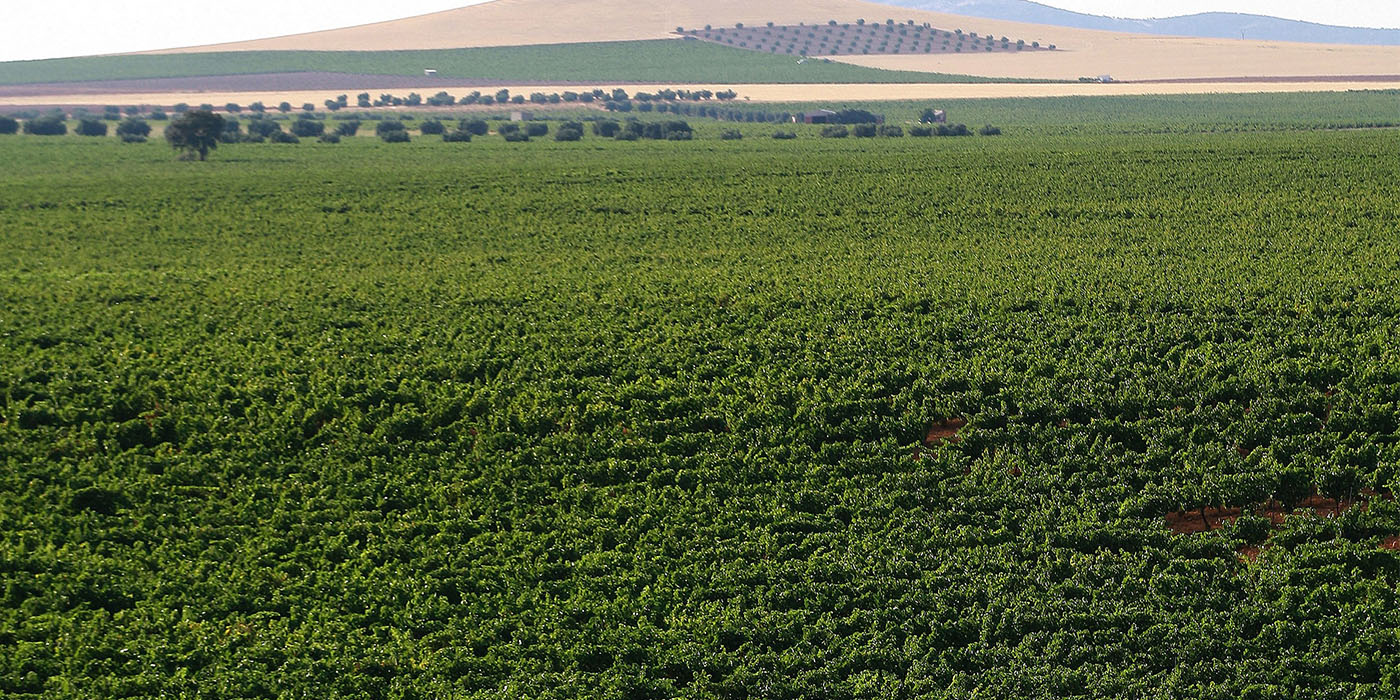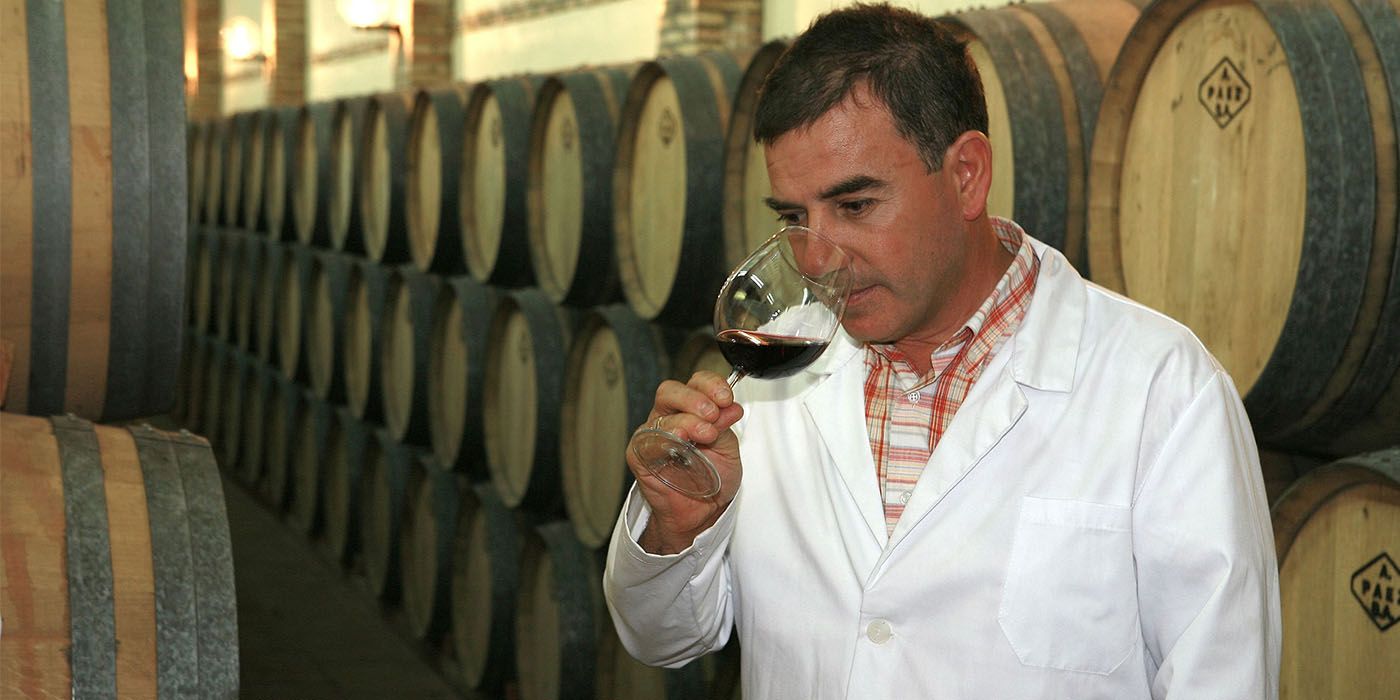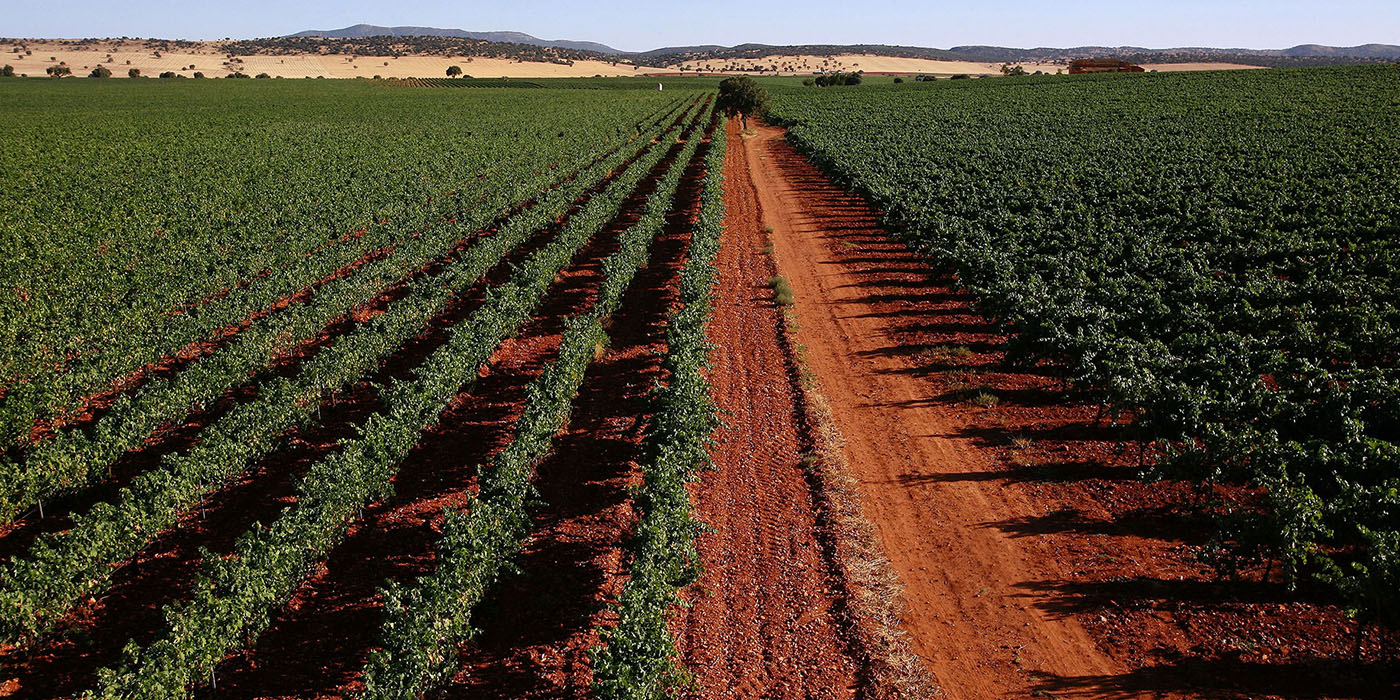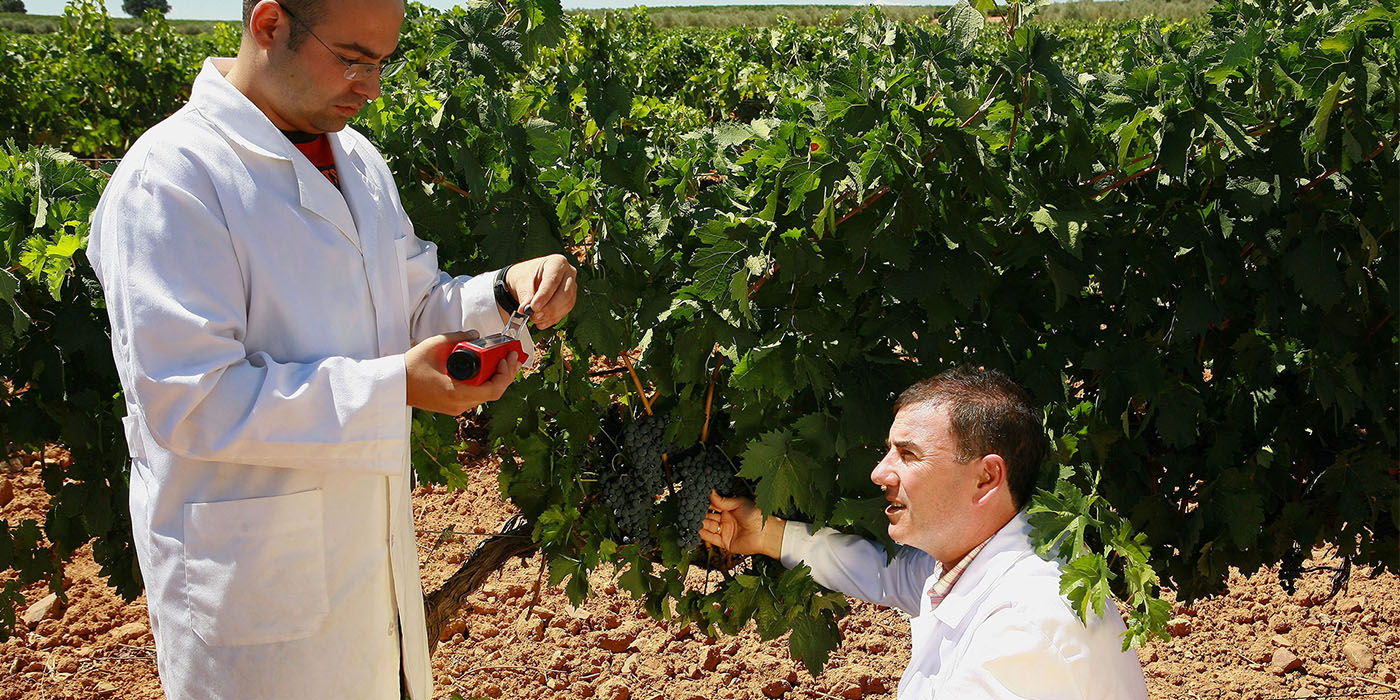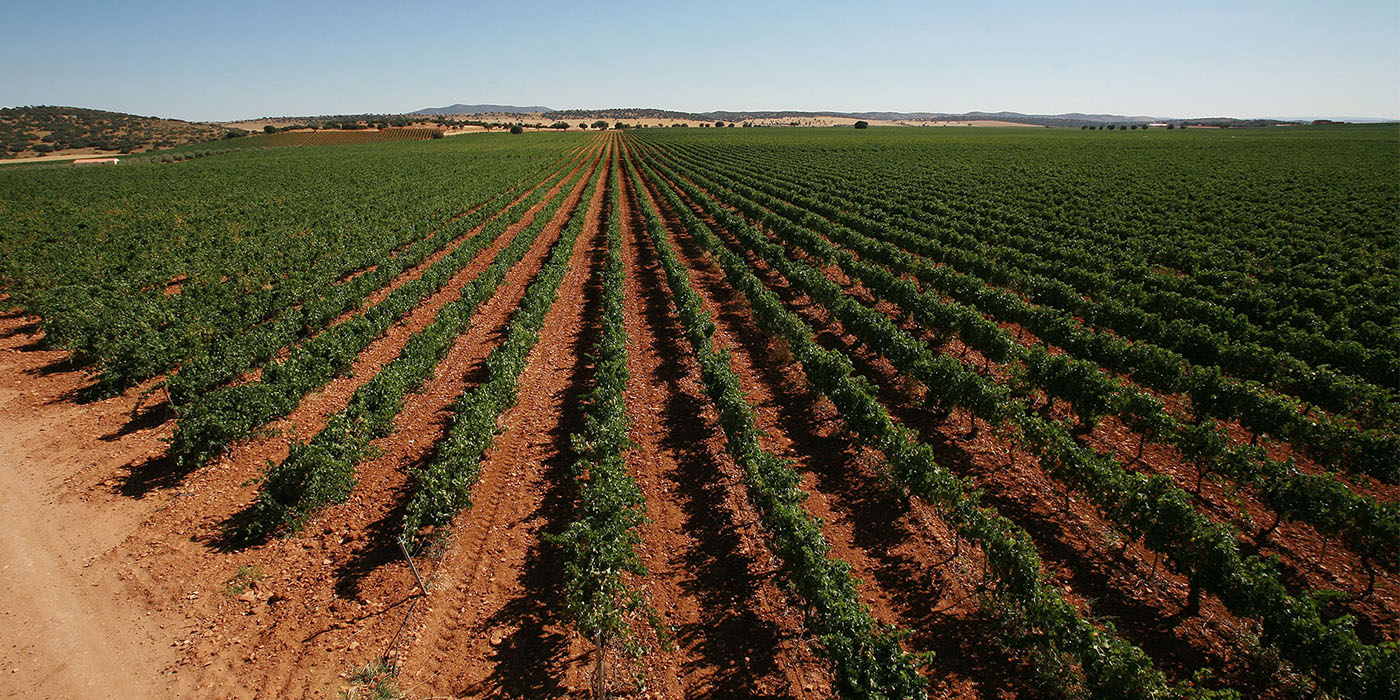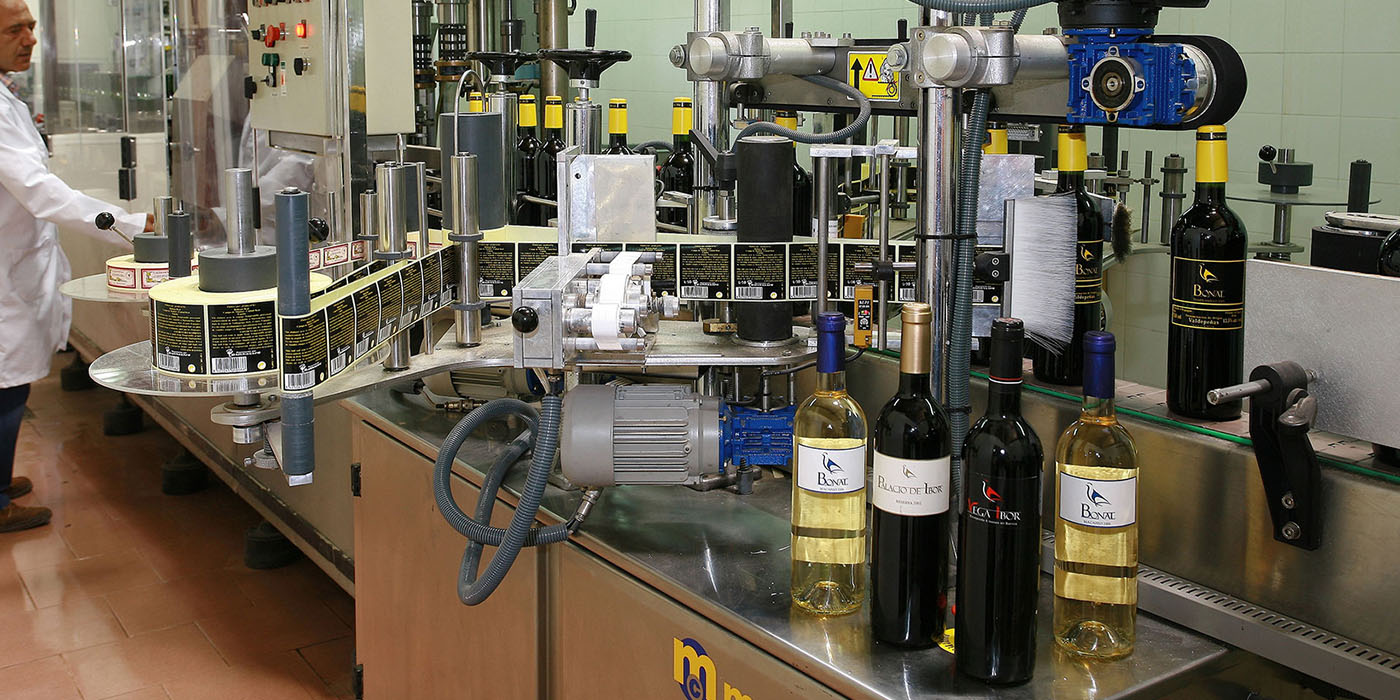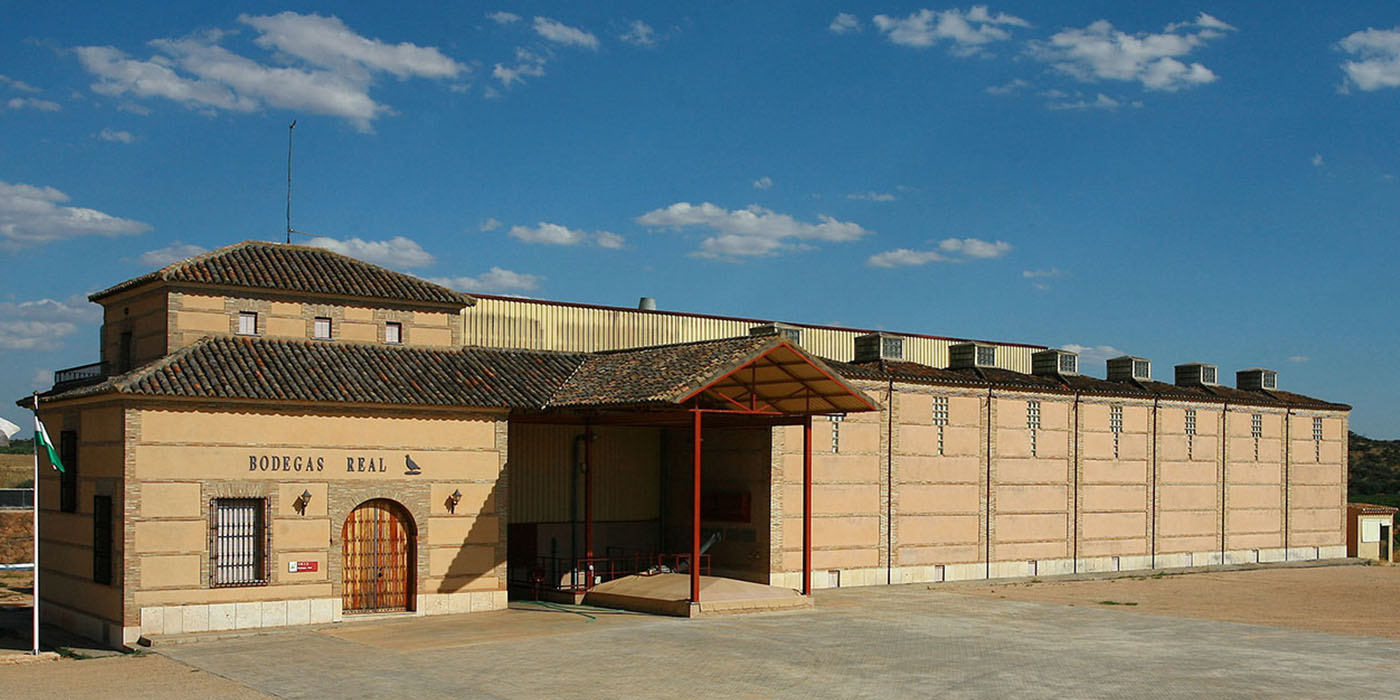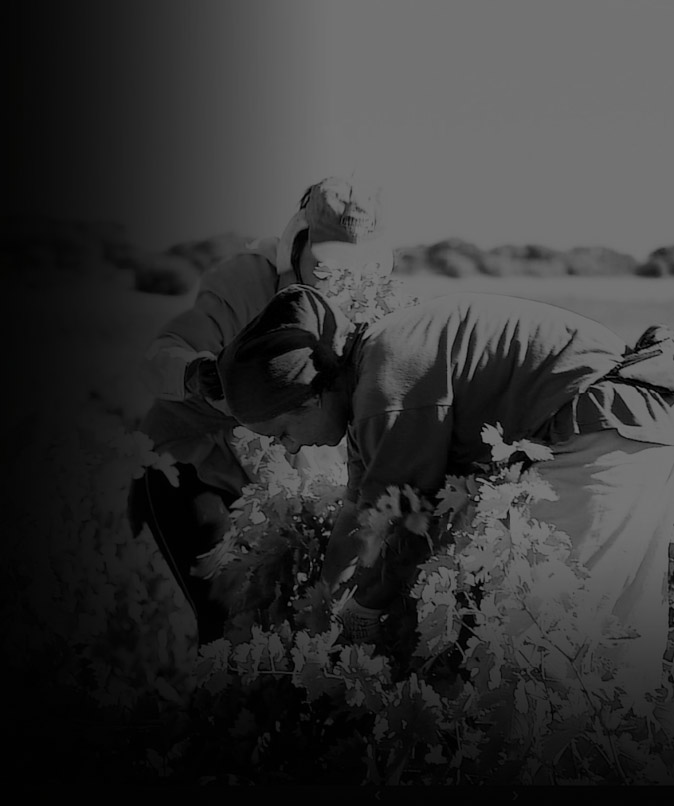Wines made with passion and respect for the land
Today the vineyards of the Estate occupy an area of 280 ha. That is home to a total of 500,000 stocks, of which the Tempranillo variety represent 80 percent. The other 20 percent of the stock is reserved for red grape varieties such as Cabernet Sauvignon, Merlot and Shiraz as well as for white grape varieties such as Chardonnay and Macabeo.
En la actualidad, los viñedos de la Finca ocupan una extensión de 280 Ha donde crecen 500.000 cepas en total, de las que el Cencibel o Tempranillo representa el 80%. El 20% restante se destina a Cabernet Sauvignon, Merlot y Syrah como variedades de uva tinta, además de Chardonnay y Viura o Macabeo, como variedades de uva blanca.
The Wineyard
The year 1984 marks the beginning of the investigation of the grounds and zonification to find the best location for vines within the farm. For this, they chose the lateral portion, oriented to the east, its solar exposure and maximum altitude of 700 meters converts it to a place adequate for the red varieties, while leaving the colder zones for the white varieties of Chardonnay and Macabeo.
From the beginning, the plantation was divided into five vineyards, whose traditional names allude to the history of the property: El Jaque, Casa Pacico, La Jarilla de los Ladrones, Cerro de las Colmenas and Cerro del Cura. Each of the wines produced by Bodegas Real comes from a selected area within these five.
Our prideFinca Marisánchez
From the year 2000 we started the annual zonal segmentation program, with which, through the conjunction of a series of parameters, the most suitable plots are identified, establishing a table of yields and qualities by zones. In this way, the quality of each one of our wines at origin is guaranteed, according to origin and annual climatic behaviour.
- Area
- DO Mancha
- Altitude
- 700m
- Latitude
- N 38° 44' 10.46''
- longitude
- W 3° 13' 23.164''
- Cultivated varieties
- Tempranillo, Garnacha Tintorera, Cabernet Sauvignon, Syrah, Chardonnay y Macabeo
- Climate
- Extreme Continental
- Soil
- High degree of permeability.
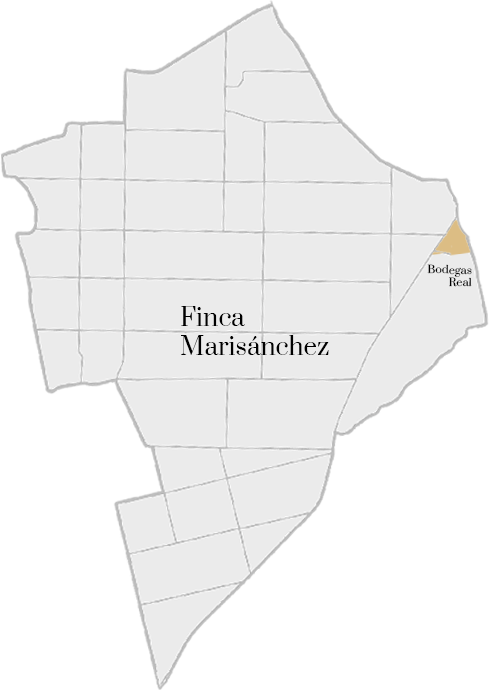
- TYPE OF SOIL
- Depending on the zoning, one can distinguish the types of ground as loose and sandy or limey and full of clay, with boulders of metamorphic rock, slate and calcareous sandstone. There is a cap between 15 and 20 percent of clay and below there is sand, which creates a high grade of permeability.
- CLIMATE
- The climate is continental extreme, characterized by very cold winters and very hot, dry summers-producing strong thermal oscillations at the end of the year. The mid-year rainfall oscillates between 350 and 400 ml/m2, following the more rainy seasons of fall and spring.
- TYPE OF TRAINING SYSTEM
- In some plots of land that have old grapes the system of conduction “en vaso” was preserved. Nevertheless, 90 percent of the plantation that was originally planted “en vaso” has been transformed over the years to the trellis system. This was done not only with the object of facilitating the harvesting labor but also to facilitate the already established cultivating techniques such as the grape picking in green, pruning in green, the dawning and ventilation. These operations only take place if they are necessary, and require looking for a balance between the exposure to the sun, the bunches and the protection from high radiation.
- IRRIGATION SYSTEM
- Due to the excessive aridity of the land during the seasonal drought, Finca Marisánchez has established a “drip irrigation” system from the beginning. It feeds from two constructed rafts in the inside of the Estate and its water comes from the wells.
- PRODUCTION
- According to the mark of plantation, Finca Marisánchez has an average yield of 2-3 kg per vine, except in the plots exploited for sales, in which productions are higher. Bodegas Real does not operate at its full capacity at the moment, as we are waiting until the harvest has the sufficient vigour and strength it will gain in 10 years. Nevertheless, we are prepared for the gradual growth of demand in the near future.
- WINTER PRUNING
- The espalier system featuring royal double cordon pruning is used in most parts of the vineyard. This system involves the application of a load of 12 buds from 6 stems. This technique enables the perfect ventilation of clusters and prevents the risk of frost damage. Pruning is carried out during winter months (November and December) coinciding with the lack of growth activity in this season. Then, some of the vine shoots are cut (pre-pruning) and the bud carriers are selected.
- GREEN PRUNING
- Green pruning takes place in spring, normally in the dry plots with old stocks. It involves bud snipping and the removal of unnecessary small vine shoots. This increases the fruit bulking and occasionally even the number of berries per cluster. Next comes a light clarification or extraction of leaves, which must be carried out with utmost care to avoid grape skin burning. Summer temperatures often soar above 40ºC, periods when grapes too exposed to the sun are at risk of being seriously damaged.
- GREEN GRAPE HARVEST
- In order to remove excess load on clusters, those with uneven or less vigorous bulking are cut during the second half of July. This procedure allows the further strengthening of clusters feeding from sap and other more direct nutrients.
- GRAPE HARVEST
- The grape harvest season takes place between August 15th and October 15th, depending on the year and its climate. Chardonnay and Merlot are the varieties that mature earlier, followed immediately by the remaining ones. In order to determine the ideal harvest time and to mark the areas from where to start the harvest and advance progressively, daily controls of probable sugar levels and acidity of the grape are carried out at a prior stage. Due to the orography of the terrain, maturation speed varies depending on orientation, soil and the characteristics of each variety. We adapt the harvesting to the said maturation rate, by setting a maturity curve to show which plots will be the first to be harvested as well as the grape´s harvest order.
- TYPE OF HARVEST
- Following the annual zoning in a number of plots, the harvest is carried out manually using 20 kg boxes or mechanically.
- WHITE WINES
- The grape picking/harvesting always takes place in the field; it is best to pick the grapes at night or early in the morning to avoid the loss of aromas and ensure that the initial temperature of the must does not exceed 13ºC. The grapes are transported directly to the cellar, where destemming and crushing take place before transferring to the stainless steel vats. In these, the pressing and soaking takes place at a temperature of 10ºC, with the goal of maintaining the organioleptic characteristics of the variety. Subsequently, after the degriming process, the must undergoes controlled fermentation lasting about fifteen days. Malolactic fermentation is not carried out at this time in order to avoid the loss of freshness and its properties. Finally, the diatomite filtering takes place before bottling.
- RED WINES
- Following the on-field selection, in which the differences between plots and varieties are taken into account, they proceed to pick a particular variety that is sent on to the selection table. It will continue its process of destemming and crushing to pass to the stainless steel vats. Devatting only takes place after the alcoholic fermentation – in which yeasts native to the farm is used – and then ongoing maceration lasts about 14 to 20 days (with various automatic rackers made throughout the day, at a controlled temperature between 22 and 26ºC.) Then they proceed to the separation. If the wine is commercialised as young wine, it is immediately clarified and bottled. If the wine is selected for aging, it is stored in large oak barrels without undergoing clarification and racking will be carried out later, before the clarification and bottling.

